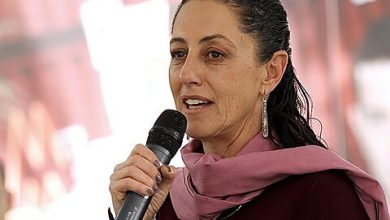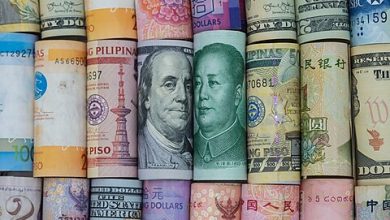Argentina’s Milei Should Dollarize after Legislative Setback

Daniel Raisbeck and Gabriela Calderon de Burgos
Initial Victories
Javier Milei’s first two months in office supplied a steady stream of good news to libertarians worldwide. There was the presidential decree that deregulates large swathes of the economy, the brilliant speech at Davos—endorsed by the likes of Tesla’s Elon Musk and historian Niall Ferguson— and the government’s introduction of its “omnibus” law, a bill designed, among other things, to privatize dozens of state‐owned companies.
The only initial setback for Milei’s government was a January 30 court ruling that declared the presidential decree’s labor reform unconstitutional. Nonetheless, the government took this in stride while it adapted certain parts of the omnibus bill so as to ensure its approval in Congress. The entire content on fiscal matters, for instance, was removed, a measure some libertarians celebrated since the law had originally included tax hikes.
A buoyant mood turned outright cheerful on February 2, when the Lower House of Congress approved the omnibus bill in general terms by a 144 to 109 margin. Milei seemed to be sailing smoothly toward a full recovery of Argentina’s lost “model of freedom,” as he termed the country’s successful, nineteenth century experiment with free trade and free markets.
A Rude Awakening
Nonetheless, the narrative changed abruptly on February 5, when the Lower House voted on the omnibus bill article by article and a majority rejected its key elements, among them the privatization scheme and increased penalties for the use of violence in protests. In effect, Milei’s honeymoon period came to an abrupt end with the onset of political reality.
After all, Milei’s party, Liberty Advances, only controls around 15 percent of the lower house of Congress and under 10 percent of the Senate. Even with the support of the Republican Proposal, the party of former president Mauricio Macri, a Milei ally, the government’s legislative forces fall well short of any type of majority. In fact, the omnibus bill was only set to pass due to the support of smaller parties linked to several provincial governors.
Since Milei ordered the bill to return to committee, the government will start from square one when it comes to measures that, unlike the content of the December “mega‐decree,” require legislative approval. At the moment, therefore, the government’s ability to pass its agenda has become more uncertain.
A Blessing in Disguise
Regardless, Milei should treat his recent legislative defeat as a blessing in disguise. The contretemps offers an opportunity to rethink his political strategy. Milei should focus on the one, fundamental measure that is most urgent for Argentina, and at the same time neither requires the approval of Congress nor is liable to being reversed by any future government.
That is, Milei should finally act on his flagship campaign promise of dollarizing Argentina’s economy and shutting down the central bank.
As we argued recently, the government’s current strategy of keeping the peso in order to dilute both the debt and the deficit might serve to solve Argentina’s fiscal problem on paper. The corollary is the necessary dilution of peso holders’ savings and purchasing power. The dilemma exposes the fundamental flaw of Finance Minister Luis Caputo’s economic plan: it involves maintaining high inflation levels—the most pernicious of taxes— for the sake of the government’s balance sheet. This despite Milei’s unequivocal campaign promise of “destroying” inflation, which had already reached triple digits when he won the presidential election in November.
Balanced budgets are, of course, desirable and necessary, to the extent that, as Warren Buffett has proposed, politicians who run deficits should be ineligible for reelection. Nonetheless, the methods through which balance is achieved matters as much as the achievement itself. After all, the Soviet Union reported fiscal surpluses for over 60 years prior to its eventual economic and moral collapse.
In Argentina’s case, the root cause of the country’s economic problems is politicians’ unfettered fiscal profligacy, with chronic deficits monetized by means of a subservient central bank. At this point, however, addressing the fiscal question without taking the monetary problem head on is a mistake. We are not alone in our assessment.
Cavallo’s Sound Warning
Domingo Cavallo is a former finance minister of Argentina who knows a thing or two about slashing inflation rapidly. As an architect of the country’s “convertibility” system of the 1990’s, which fixed the peso’s exchange rate to the dollar (albeit with significant design flaws), Cavallo helped to reduce Argentina’s annual inflation levels from 2,600 percent in 1989–1990 to 25 percent in 1992 and under 1 percent by 1998. In a blog post published on January 31, Cavallo wrote the following:
“The best way to generate expectations of an accelerated decrease (in inflation) in 2024 is for President Milei to reassume his sermonizing on dollarization, so that, by 2025, no trace of exchange rate controls remains and there is a stabilization plan that can eradicate inflation, just as the convertibility plan did in 1991.”
Cavallo adds the following, crucial warning:
“No one will believe that the dollarization proposal is serious as long as the free purchase and sale of dollars remains illegal. It is essential that a free exchange rate be allowed to operate without any type of interference from the central bank, so that any natural or legal person may sell or buy foreign currency.”
Ending exchange rate controls is certainly urgent, as is the elimination of the central bank’s control over all trade operations. As we wrote on January 19, it makes little sense for Milei’s government to uphold the central bank’s monopoly on the sale of dollars in the midst of a deregulation spree. Once importers and other economic actors are allowed to buy foreign currency in a free market, the central bank’s limited amount of dollars—a theoretical obstacle to dollarization— becomes irrelevant. As in the case of Milei’s successful elimination of rent controls, the end of government intervention will produce abundant, pent‐up supply.
Cavallo raises a further concern about the real exchange rate, which takes into account the price of goods in the two countries being compared to gain a better picture of the value of both currencies. Argentina’s real exchange rate, he writes, has decreased despite lower inflation levels in January compared to December, when Caputo adjusted the official dollar‐peso rate from ARS $400 to ARS $800 (compared to a black market, “blue dollar” rate of around ARS $1,000 at the time). A further reduction of the real exchange rate in February, Cavallo wrote, could lead to “pressure for further devaluation” in March. Milei, however, was elected on a platform that promised a strong and stable currency, not further devaluations.
Hence the concern with Milei’s reticence about dollarization, which he has only mentioned in recent months to confirm his past pledge to end the peso monopoly, but only eventually and without any details in terms of when or how to do so. In practice, however, the government’s plan is inconsistent with dollarization and its immediate effect of precluding any manipulation of a national currency.
The “Lack of Dollars” Fallacy
Financial journalist Julián Guarino added some context to Cavallo’s pronouncement:
“Casa Rosada [the government] and Caputo are feeding inflation to clean up the Central Bank’s balance sheet by diluting the debt and public spending (the Treasury). But, at the same time, inflation is defying all expectations. In other words, the government is driving inflation, which contradicts the government’s supposed aim of reducing inflation. This is why all eyes are on the central bank.”
Guarino further comments that, under the assumption that dollarization requires the central bank to hold net reserves equal to all liabilities on its balance sheet, “the Milei‐Caputo plan could come up short by failing to amass sufficient dollars [to dollarize], which would be the worst‐case scenario.”
The Caputo plan is falling short, albeit not for the alleged “lack of dollars” in Argentina. As we have written repeatedly, Argentines—namely individuals and businesses—have plenty of dollars (well over 50 percent of GDP), which they deliberately keep outside of the formal financial system. The inflow of even a portion of these assets into deposits—as likely would occur with the mere announcement of dollarization— would cover the entirety of the monetary base, which stood at around USD $12 billion at the official exchange rate on February 8.
Nonetheless, the essential point that Milei and his advisers should understand now is that the central bank already has more than enough dollars to dollarize.
The reason is that dollarization is a two‐step process. As Steve Hanke and Francisco Zalles recently wrote concerning the first step:
“…with the exception of peso notes and coins outstanding, a stroke of the pen is all that is required to redenominate peso assets and liabilities into greenbacks.”
The second, parallel step involves dollarizing the circulating currency (peso notes and coins outstanding). In this sense, Hanke and Zalles explain that, contrary to the theory that the central bank needs a certain amount of net reserves to dollarize, “it is gross liquid foreign‐exchange reserves that are relevant, not net reserves.” In terms of this key metric:
“As of December 31 and at Argentina’s official exchange rate, the BCRA [Banco Central de la República Argentina] reported ‘International Reserves’ of AR $18,654 billion pesos (US $23.1 billion), significantly more than the AR $7,435 billion (US $9.2 billion) in ‘Banknotes and Coins in Circulation.’”
Since international reserves are “liquid unencumbered gross reserves,” their stock “is more than adequate to successfully convert Argentina’s stock of peso notes and coins into U.S. dollars.” (Emphasis added)
Concerning the conversion of the USD $9 billion or so of circulating currency into dollars, Milei’s government should keep in mind that this involves a process in and of itself. As such, all banknotes and coins will not be dollarized at a moment’s notice. Rather, the conversion of the circulating currency into dollars takes place over a period of time during which both currencies circulate simultaneously, at the exchange rate at which dollarization is announced.
As we wrote previously, in 2000, Ecuador dollarized all sucres (the former national currency) in circulation within a nine‐month period mandated by the government. In El Salvador, citizens voluntarily converted 90 percent of colones (the former national currency) into dollars within a 24‐month period that began in 2001.
The Need to Dollarize Now
A prudent option for Argentina would be to mandate a 24‐month period for the dollarization of all pesos in circulation at the determined exchange rate. How can the government ascertain the latter? Hanke and Zalles propose an official announcement of dollarization followed by a 30‐day period in which the exchange rate would settle freely. The prevalent rate at the end of said period would be the official dollarization rate.
An alternative at this moment—given that exchange rate controls remain in place— would be to announce dollarization at a rate slightly above the “blue dollar” rate, which is the closest available figure to a free‐market rate of exchange.
In terms of converting circulating pesos to dollars, any logistical challenge is clearly surmountable. In Ecuador, for instance, the government relied on the Coca‐Cola Company’s supply network to exchange dollars for sucres in remote rural areas.
However, Milei’s government must dollarize soon to avoid the possibility of dollarization being incomplete at the time of the next election. The potential victory in 2027 of an anti‐dollarization candidate could derail the process, or at least lead to an attempt to sabotage dollarization while pesos still circulate. Luckily, however, Milei has had an electoral mandate to dollarize since the very first day of his term in office.
As Cavallo argues, a prompt dollarization would lead to a sharp decrease in inflation. If the process is complete well before the 2027 presidential election, this alone—ceteris paribus—should win Milei a second term in office. Nonetheless, even if Milei is not reelected, dollarization and the subsequent end to high inflation will cement his legacy in the long term. Once accustomed to the use of a strong currency, few if any Argentines will accept the reintroduction of the peso or any other means of exchange that politicians can manipulate at will.
In Ecuador, for instance, dollarization has enjoyed approval levels of 90 percent and above for years; the dollar’s popularity even outstripped by far that of left‐wing strongman Rafael Correa during his heyday. Hence the utter failure of Correa’s attempt to de‐dollarize. Given the not unlikely scenario of Peronism’s eventual return to power in Argentina, Milei should make sure that dollarization has taken place well within the limits of his current term.
How to Dollarize: The Constitutional Question
While the main objection to dollarization in Argentina has been financial (and erroneous)—the supposed lack of dollars—the only potential obstacle is constitutional and political. As Article 75 of Argentina’s constitution states, “it pertains to Congress” to:
“Establish and regulate a federal bank with the power to issue currency, as well as other national banks…” (Section 6)
“Have currency stamped, fix its value and that of foreign ones…” (Section 11)
“Provide what is conducive… to the defense of the value of the currency.” (Section 19)
From a legal perspective, some commentators argue that Congress’s mandate to “establish” a federal bank “with the power to issue currency” precludes the possibility of dollarization since it would be unconstitutional. However, economist Emilio Ocampo rightly points out that—beyond Congress’s obvious, century‐long violation of the mandate to defend the Argentine currency’s value— the aforementioned legal arguments fail to take into account the myriad ways in which dollarization can take place.
Consider the fact, for instance, that the National Bank of Panama, which is a state‐owned commercial bank (not a central bank), mints balboa coins that are of equal denomination to the coins that circulate in the United States: cents, nickels, dimes, quarters, half dollars, and dollar coins. In a strict sense, then, Panama, a dollarized country since soon after its independence from Colombia in 1903, still issues a national currency, albeit with a fundamental restriction: it is limited to coins that are equivalent to their American counterparts.
Argentina could do the same in order for Congress to meet the constitutional mandate to ensure that a currency is “stamped,” and its value “fixed.” It could do so, for instance, through the state‐owned Banco de la Nación Argentina, a commercial bank, even after its intended privatization. Ocampo makes the additional point that the central bank was never established as a “federal bank.” Hence, Milei could shut down the central bank by executive order, much in the same way as he got rid of ministries, secretariats, and undersecretariats.
Since the Argentine government already fixes an official exchange rate without needing to go through Congress, it also could set the rate at which all pesos would cease to circulate (for instance, during the suggested 24‐month‐period.) In other words, it is perfectly feasible for Argentina to dollarize without Congress’s approval and without removing Congress’s constitutional mandate to issue currency.
Indeed, Argentina’s dollarization is the one, certain way to ensure that, in the future, Congress can meet its constitutional duty—set out in the original, classical liberal version of 1853—to defend the currency’s value. Without moves to dollarize soon, a lasting return to the model of freedom which Milei was elected to restore will become out of reach.





